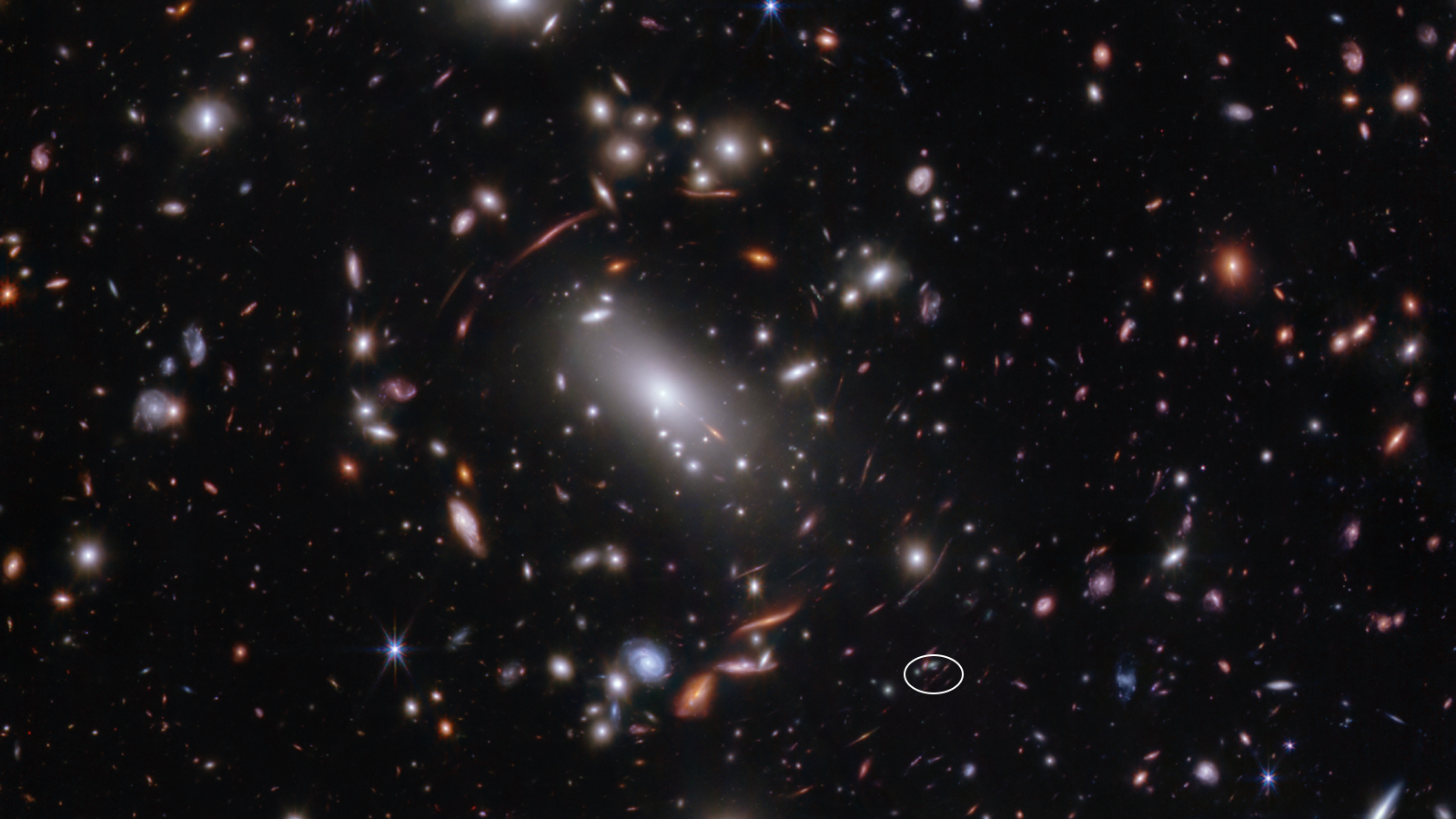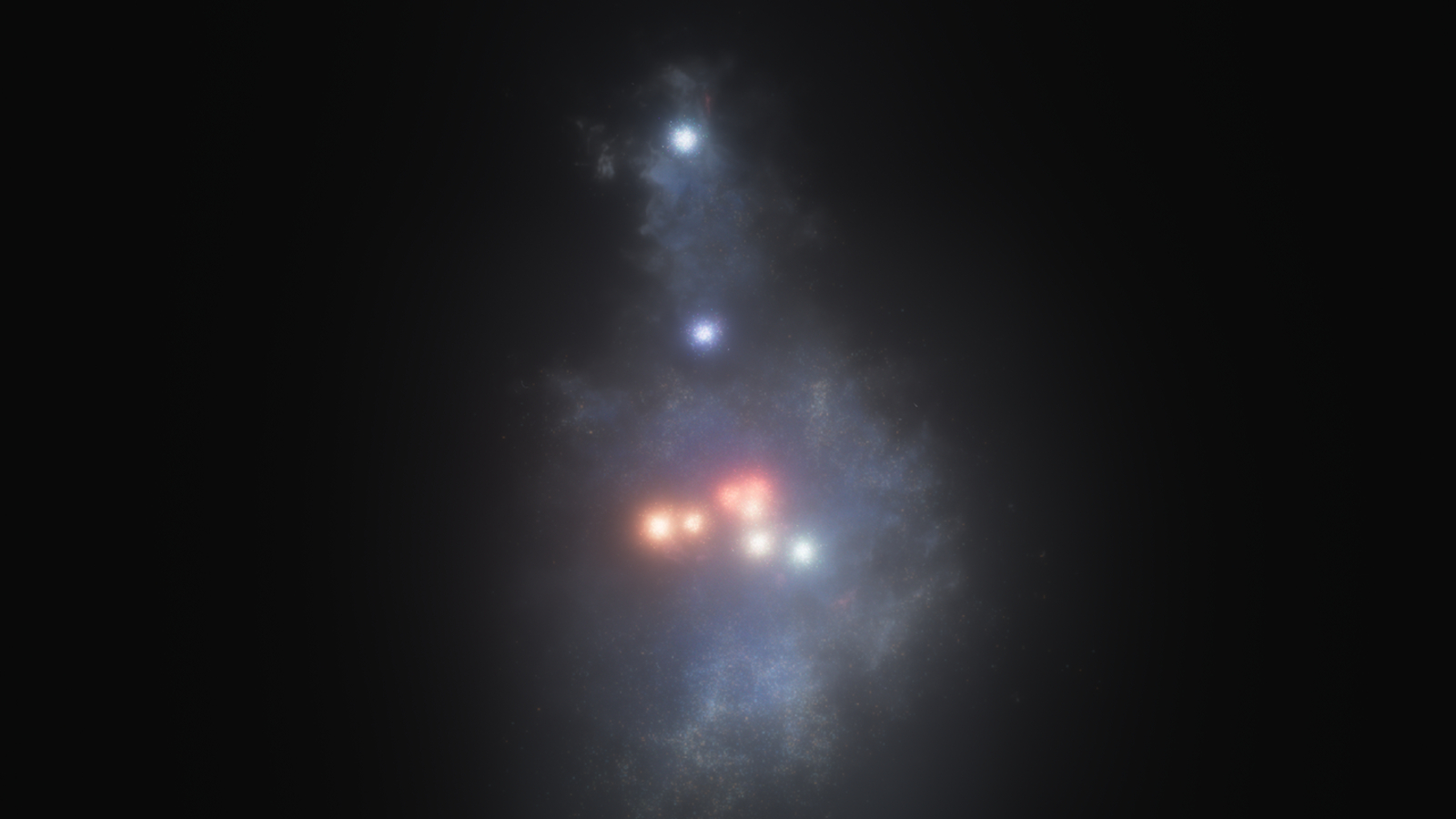For the first time, astronomers have spotted and “weighed” a baby Milky Way-like galaxy lurking in the early universe, using incredibly detailed images from the James Webb Space Telescope (JWST). The researchers discovered the galaxy, named “Firefly Sparkle” because the dots in it resemble the glowing insects, thanks to a quirky space-time phenomenon predicted by Albert Einstein.
The light coming from Firefly Sparkle dates to around 600 million years after the Big Bang, which occured around 13.8 billion years ago. The young galaxy was spotted thanks to JWST’s unmatched power to resolve fine details, coupled with “gravitational lensing.”
First predicted by Einstein’s theory of general relativity in 1915, gravitational lensing occurs because light is warped as it passes by massive objects. In this case, the phenomenon also magnified the light from the distant object, enabling JWST to detect the far-flung galaxy — although the image is warped.
This effect means the JWST sees the galaxy stretched out into a line with multiple firefly-like bright spots, which enabled the researchers to accurately measure the individual components of the galaxy and create a detailed picture of it.
In a new study, published Dec. 11 in the journal Nature, researchers revealed that unlike some of the other galaxies JWST has spotted in the early universe, which are so huge they threaten to break cosmology, Firefly Sparkle is much less massive and dense. It likely resembles what the Milky Way looked like at a similar age and could reveal how our own galaxy evolved, the study authors noted.
Related: 42 jaw-dropping James Webb Space Telescope images

“Most of the other galaxies Webb has shown us aren’t magnified or stretched, and we are not able to see their ‘building blocks’ separately,” study lead author Lamiya Mowla, an astronomer at Wellesley College in Massachusetts, said in a NASA statement. “With Firefly Sparkle, we are witnessing a galaxy being assembled brick by brick.”
Galactic evolution
The research team identified at least 10 individual star clusters within Firefly Sparkle, each with unique properties, suggesting that they have not yet been mixed together, like the jumbled-up stars spread across the arms of the Milky Way.
“This galaxy has a diverse population of star clusters, and it is remarkable that we can see them separately at such an early age of the universe,” study co-author Chris Willott, a JWST mission scientist with the National Research Council Canada, said in the statement. “Each clump of stars is undergoing a different phase of formation or evolution.”
The stellar clusters are arranged asymmetrically, with two clusters likely looming above the rest. This is another hint that these clusters have not yet mixed. As a result, it could take billions of years before Firefly Sparkle starts to resemble the Milky Way, the researchers wrote.

Firefly Sparkle also has two companion galaxies, which are located 6,500 light-years and 42,000 light-years away, respectively. While these are vast distances to us, the trio are close enough together that they would all fit within the Milky Way, which spans up to 100,000 light-years across.
It is therefore possible that these mini-galaxies could collide and merge, similar to how the stellar clusters inside Firefly Sparkle are expected to eventually intermingle, which may have also happened to the early Milky Way.
“It has long been predicted that galaxies in the early universe form through successive interactions and mergers with other tinier galaxies,” study co-author Yoshihisa Asada, a doctoral student at Kyoto University in Japan, said in the statement. “We might be witnessing this process in action.”
